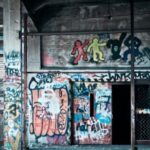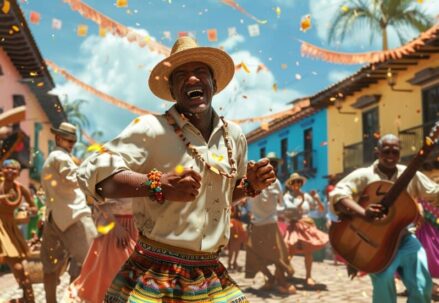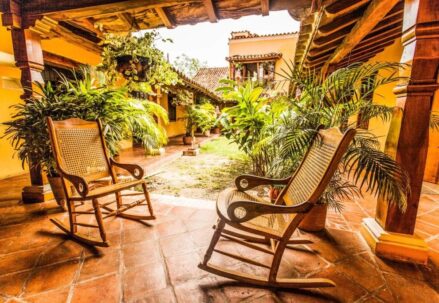In recent times, their exploration of Bogotá’s hidden gems had dwindled. Nonetheless, the advent of a long weekend ignited a spark of curiosity, steering them towards Barrio 20 de Julio. This neighborhood, named to commemorate Colombia’s independence, is deeply emblematic for the people of Bogotá, celebrated for its bustling market and the sacred presence of the Divino Niño Jesús within the grand church that anchors the main square.
A Journey Through the City’s Veins
Their adventure began with the activation of Waze on a quiet Sunday. The city’s ciclovía tradition had transformed the usual traffic patterns, prompting a picturesque detour through historical neighborhoods. From Chapinero, they weaved through the Candelaria, past landmarks like Las Cruces and Calle de los Comuneros, and over rolling foothills into the welcoming embrace of Barrio 20 de Julio. This detour was not just a route but a passage through the heart of Bogotá, revealing layers of the city often overlooked.
The Vibrant Pulse of Barrio 20 de Julio
Upon entering the barrio, they were greeted by a familiar urban tableau:
- Locals relaxing with games of poker: The sight of residents unwinding, engaged in friendly games under the open sky, offered a slice of community life in its purest form;
- Dogs lounging on the sidewalks: Stray dogs made themselves at home among the people, adding to the laid-back atmosphere of the neighborhood;
- The makeshift charm of quickly poured cement paths: The sidewalks, uneven and patched, told stories of rapid urban adjustments, giving the area a unique aesthetic appeal.
As they advanced towards the market, a noticeable shift in the atmosphere was evident. The market’s vibrancy was like a beacon, drawing people into its lively embrace. The energy here was palpable, characterized by a bustling dynamism that seemed to animate every corner of the space. The market became a living entity, pulsating with the heartbeats of countless visitors and vendors. People from all walks of life merged into a vibrant mosaic, each person there for a different reason but united by the communal experience of the market. The variety of goods on offer was astonishing:
- Luscious fruits: Stalls overflowed with colorful, ripe fruits, their fragrances mingling in the air, tempting passersby with the promise of natural sweetness;
- Unexpected finds like discarded rubber gloves: Amid the typical market fare, surprising items surfaced, offering a glimpse into the eclectic and sometimes eccentric nature of marketplace offerings.
This market scene was more than a mere commercial hub; it was a testament to the rich tapestry of life in Barrio 20 de Julio. Every item for sale, every vendor’s shout, and the diverse crowd navigating the stalls, together wove a vibrant narrative of community, resilience, and the simple joys of everyday life. It was a reminder of the barrio’s ability to blend the ordinary with the extraordinary, creating a place where every visit could uncover something new and unexpected.
A Sacred Gathering: The Divino Niño Jesús
The heart of their visit lay in the plaza, where the community’s spiritual life unfolded in full view. People from all walks of life converged here, drawn by the revered Divino Niño Jesús. The scene was a powerful mosaic of faith, with masses occurring simultaneously in various parts of the church complex, each corner brimming with devotion. This gathering was a profound reminder of the deep-rooted spirituality that permeates Bogotá, a city united by its faith in the Divino Niño.
Reflections on Faith and Devotion
Their encounter with the Divino Niño Jesús significantly deepened their understanding of its profound impact. This sacred figure, venerated not just in Colombia but also in distant lands, elicited a sense of awe seldom felt. The atmosphere around the Divino Niño was electrifying, charged with the collective fervor of the faithful, each person there carrying a heart full of hopes, dreams, and fervent wishes. Witnessing the spectrum of devotion, from whispered prayers to tears of faith, underscored that this was far beyond simple religious observance. It was a powerful testament to the enduring strength of belief and the deep roots of spiritual and cultural traditions embedded within the community. This was a vivid demonstration of how faith could unite diverse individuals, creating a shared experience that transcends the physical boundaries of the church and spills into the fabric of daily life. The Divino Niño Jesús, therefore, stood as a beacon of hope and a source of strength for many, symbolizing the intertwining of divine intervention with the aspirations and struggles of the human condition.
The Essence of Barrio 20 de Julio
To describe Barrio 20 de Julio solely in terms of its physical characteristics would overlook the essence that defines it. While its appearance might mirror other Latin American locales with its informal markets and bustling streets, the spirit of the barrio is uniquely Bogotán. Here, amid the everyday commerce and the flow of life, they found themselves an anomaly yet seamlessly woven into the fabric of the community. The barrio operates on a rhythm of authenticity and unassuming engagement, a place where life unfolds with an unscripted beauty, and where every corner holds a story waiting to be discovered.
Their journey through Barrio 20 de Julio was more than a mere exploration; it was an immersion into the heart of Bogotá, revealing the city’s multifaceted character and the enduring spirit of its people.




